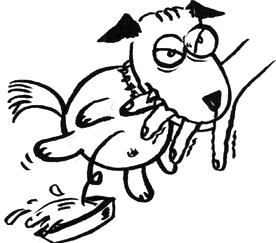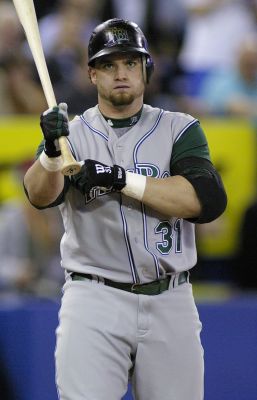I received an offer of Lyle Overbay and Chien-Ming Wang for Adrian Gonzalez in my 16-team MLB 5x5 roto league. I need pitching help. Should I make the deal? Shoeless Joe would not make this deal (and note that Shoeless Joe’s e-mail back to JPops was sent before Gonzalez’s three-run jack last night). And here’s why: First, in 2/1 or 3/2 trades, Shoeless Joe almost always tend to favor the side that includes the best player in the deal. Wang and Overbay are fine players, but Gonzaleeeezzz (if only Harry Carey was alive today to butcher his name) is the best fantasy player in the bunch. Secondly, remember, when making uneven deal that has your team getting back more players than you are giving up doesn’t mean that this deal is just Overbay and Wang for Gonzalez —it’s Overbay and Wang for Gonzalez and XX player, ie, the player you need to drop to accommodate the trade. More on this in a minute. As for Gonzalez, the former first overall draft pick in 2000, Gonzalez smacked 24 homers to go with a .304 average in his first full season last year. He’s already got 7 dongs and 23 RBIs (a club record in April for the Padres) in the short 2007 season. And while he plays at a deep position and a pitcher’s park, Shoeless Joe wouldn’t sell high for a middling starting pitcher and average starting first basemen. While Wang will get wins, Shoeless Joe doesn’t think he’ll repeat his sub-4.0 ERA and 1.31 WHIP from last season. And because his game is seriously devoid of K’s, that makes him a one category pitcher in Shoeless Joe’s opinion. While pitching depth may be hard to come by in a deep 16-team league, Shoeless Joe just wouldn’t sacrifice a young stud like Gonzalez for Wang. And it’s unclear who JPops would be dropping to accommodate Wang. Shoeless Joe a tough time believing that there’s a large difference between Wang and the guy currently on JPops roster or a guy who could be obtained off waivers. If it looks like your team needs wins, their might be a guy like Tim Wakefield or Livan Hernandez floating around your waiver wire. And don’t forget the young studs like Tim Lincecum, Homer Bailey, or Adam and Andrew Miller, who will probably be called up and be assets THIS fantasy season. |
Friday, April 27, 2007
Yo, Adrian! Don’t Sell High
Wednesday, April 25, 2007
Resisting Sucker Trades
Sunday, April 22, 2007
A-hole, or Merely an Ingrate?
|
Wednesday, April 18, 2007
Free Jonny Gomes
|
Sunday, April 15, 2007
Baseball HQ vs. PECOTA
|
Saturday, April 14, 2007
Snap, Crackle, Drop?
|
Friday, April 13, 2007
We Do It All For the Love Y'all
|
Thursday, April 12, 2007
Confessions of a Fantasy Cooler
|
Enrique Polazzo! Enrique Polazzo!
|
Posted by
Doc Gram
at
1:43 PM
0
snarky comments
![]()
Categories: middle infielders, pickups, second basemen
Wednesday, April 11, 2007
Join the Right Guard Protest
|
Tuesday, April 10, 2007
Wheelerin' And Dealerin'
Saturday, April 7, 2007
Dating Barry Bonds
Friday, April 6, 2007
Pitcher to Watch: Zach Greinke
Three Sleeper Catchers
Thursday, April 5, 2007
Dice-10K
|






















